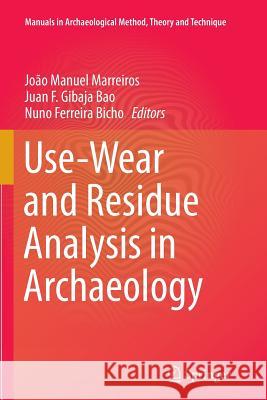Use-Wear and Residue Analysis in Archaeology » książka
topmenu
Use-Wear and Residue Analysis in Archaeology
ISBN-13: 9783319379630 / Angielski / Miękka / 2016 / 223 str.
Kategorie BISAC:
Wydawca:
Springer
Seria wydawnicza:
Język:
Angielski
ISBN-13:
9783319379630
Rok wydania:
2016
Wydanie:
Softcover Repri
Numer serii:
000296959
Ilość stron:
223
Waga:
0.33 kg
Wymiary:
23.39 x 15.6 x 1.27
Oprawa:
Miękka
Wolumenów:
01
Dodatkowe informacje:
Wydanie ilustrowane











